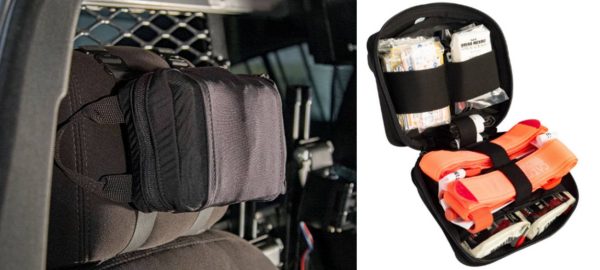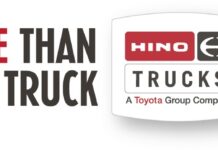Those with wrecker experience know the risks of responding to motorists in need. Although “Move over” laws in many states require drivers to change lanes away from emergency vehicles, ANSI reflective clothing helps make tow operators more conspicuous — especially during inclement weather and darkness, highways are always dangerous.
Critical minutes, even seconds, can make a difference in an emergency and that’s why every tow truck should have a first aid kit, sometimes called as an IFAK (Individual First Aid Kit). Kits differ in size and design, but contents generally include gloves, a tourniquet, gauze/dressings, tape, shears and a CPR face shield.
The IFAK should be readily accessible. One good location is the passenger seat’s headrest. Some kits are designed to be attached there because the front of the headrest is often accessible to drivers and bystanders.

An example of a headrest mounted IFAK. An open IFAK showing its contents.
A medically trained, well-equipped tow operator may be the first one on scene to render life-saving aid. The American Red Cross, American Heart Association, and American Safety and Health Institute are well-known organizations that offer CPR and first aid training, often at little or no cost to students. Additionally, The American College of Surgeons offers a class called, Stop the Bleed (https://www.stopthebleed.org/training/), where students receive hands-on training in hemorrhage control through direct pressure, tourniquet application, and wound packing.

A recent example of a tow truck operator rendering critical care came in August 2019 on the New Jersey Turnpike near exit 8A. Alex Petruccio, of Windsor, New Jersey witnessed the horrific event when the disabled motorist of the car he was to tow, was struck by another car, severing the lower leg of his customer. With prior training as an EMT and lifeguard, Petruccio quickly packed the bleeding wound with paper towels and improvised a belt as a tourniquet. His quick actions are credited with saving his customer’s life. As Petruccio said, “I could not stay there, watch that happen, [and] not do anything.”

An example of a tourniquet.








